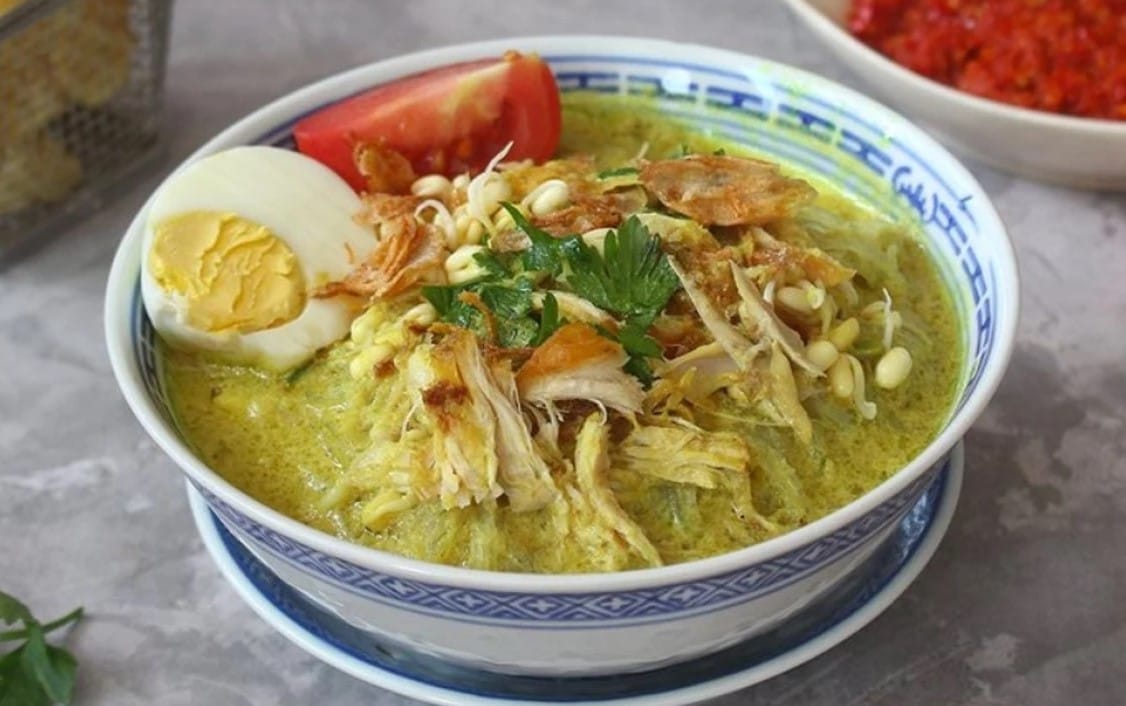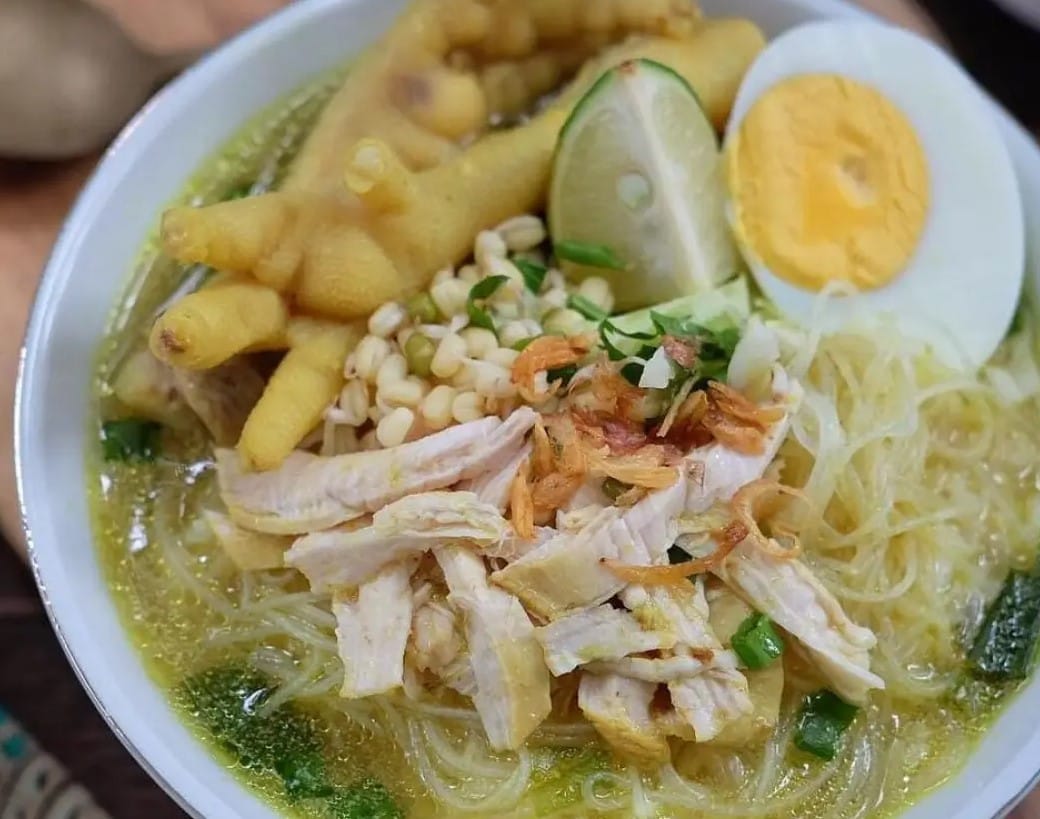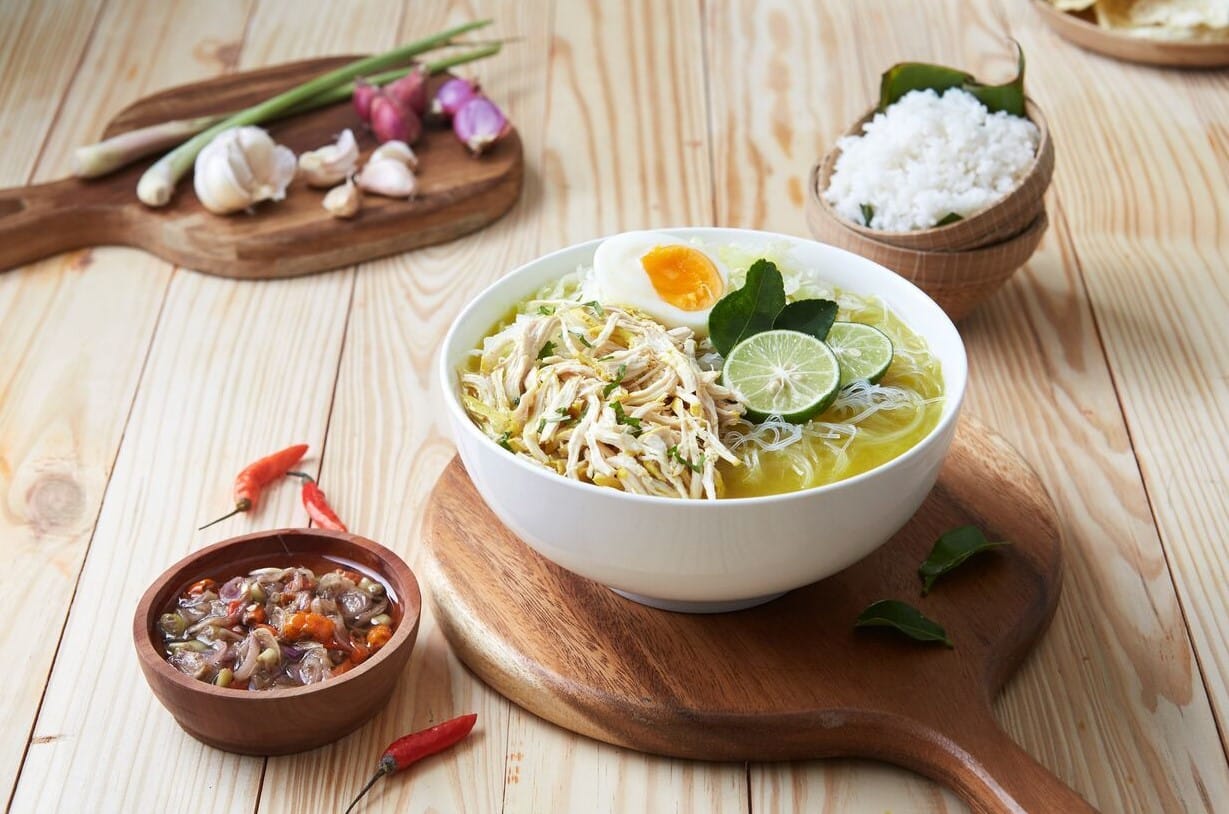A steaming bowl sits before me. Golden broth, tender chicken, rice noodles. The aroma of lemongrass and turmeric fills the air. This is soto ayam, Indonesia’s beloved chicken soup.
I first tasted soto ayam on a rainy day in Jakarta. The warmth spread through my body with each spoonful. It was comfort in a bowl. Now, I make it at home when I need a taste of Indonesia.
Soto ayam is more than food. It’s culture in a dish. Every region has its version. Every family has its recipe. But the essence remains the same – nourishing chicken soup with aromatic spices.
The Origins of Soto Ayam
Soto ayam’s roots run deep in Indonesian history. Some say it came from Chinese immigrants. Others claim it’s purely Indonesian. The truth is likely a blend of influences.
The word “soto” itself is thought to come from the Chinese “caudo”, meaning soup. Over time, Indonesians made it their own. They added local spices and ingredients. The result was soto ayam.
Today, soto ayam is found across Indonesia. From street carts to high-end restaurants. It’s a dish that unites the nation.

Regional Variations
Indonesia is vast. Its cuisine reflects this diversity. Soto ayam is no exception. Each region puts its spin on the dish.
In Jakarta, you’ll find soto betawi. It’s rich with coconut milk. Makassar offers soto banjar, with a clear broth and potato cakes. Surabaya’s version includes koya, a powdered mix of prawn crackers and garlic.
These variations are a culinary map of Indonesia. They tell the story of local tastes and available ingredients.
In Central Java, soto Kudus is a popular variant. It is known for its clear broth and the use of buffalo meat instead of chicken, reflecting the local tradition. Meanwhile, in East Java, soto Lamongan is famous for its koya topping, which adds a unique texture and flavor to the dish.
In Bali, soto ayam is often served with a side of sambal matah, a raw shallot and lemongrass relish that adds a fresh, spicy kick. In Sumatra, soto Padang is a notable variant, characterized by its use of beef and a rich, spicy broth.
Key Ingredients
At its core, soto ayam is simple. Chicken, broth, and spices. But it’s the details that make it special.
The broth is key. It’s made by simmering chicken with aromatics. Lemongrass, ginger, and garlic are common. Turmeric gives it the signature golden color.
The spice paste, or bumbu, is crucial. It typically includes:
- Shallots
- Garlic
- Turmeric
- Ginger
- Candlenuts
- Coriander seeds
These are ground into a paste and fried. This releases their flavors and aromas.
The chicken is usually shredded. Sometimes, it’s fried for extra texture. Rice or noodles form the base of the bowl.

Toppings add variety. Common ones include:
- Boiled egg
- Bean sprouts
- Fried shallots
- Green onions
- Lime wedges
Each adds its own texture and flavor to the dish.
In addition to these common ingredients, some variations of soto ayam may include additional elements such as coconut milk, which adds a rich, creamy texture to the broth. Other versions might incorporate different types of noodles, such as vermicelli or glass noodles, to provide a different mouthfeel.
The Art of Preparation
Making soto ayam is a labor of love. It takes time and patience. But the result is worth it.
The process starts with the broth. Chicken is simmered with aromatics. This can take hours. The longer it simmers, the richer the flavor.
While the broth cooks, the spice paste is prepared. The ingredients are ground together. Then, they’re fried in oil until fragrant. This step is crucial. It develops deep, complex flavors.
The cooked spice paste is added to the broth. This is where the magic happens. The flavors meld and deepen.
Finally, the toppings are prepared. Each is cooked separately to maintain its texture. Assembly is an art in itself. Each bowl is carefully layered with noodles, chicken, broth, and toppings.
The preparation of soto ayam also involves a careful balance of flavors. The broth should be savory and aromatic, with a hint of sweetness from the shallots and a slight bitterness from the turmeric. The spice paste should be fragrant and flavorful, without overpowering the delicate taste of the chicken.

Serving and Eating
Soto ayam is more than just a meal. It’s an experience. The dish is typically served with condiments on the side. These might include:
- Sambal (chili paste)
- Kecap manis (sweet soy sauce)
- Emping (melinjo nut crackers)
Diners customize their bowl to taste. A squeeze of lime here. A dash of sambal there. It’s a personal experience.
The proper way to eat soto ayam is with a spoon and fork. The spoon is for the broth. The fork is for the solids. But there’s no shame in slurping. In fact, it’s encouraged.
In addition to the traditional condiments, some regions may offer additional accompaniments, such as pickled vegetables or crispy fried shallots, which add extra layers of flavor and texture to the dish. The experience of eating soto ayam is not just about the taste, but also about the sensory pleasure of combining different elements to create a harmonious whole.
Health Benefits
Soto ayam isn’t just delicious. It’s nutritious too. The broth is hydrating and easy to digest. It’s perfect for hot climates.
The spices have health benefits. Turmeric is anti-inflammatory. Ginger aids digestion. Garlic boosts the immune system.
The chicken provides protein. The vegetables add fiber and vitamins. It’s a balanced meal in a bowl.
In addition to these benefits, soto ayam is also low in fat and calories, making it a healthy option for those looking to maintain a balanced diet. The use of fresh, natural ingredients ensures that the dish is free from artificial additives and preservatives, making it a wholesome and nourishing choice.
Making Soto Ayam at Home
You don’t need to go to Indonesia to enjoy soto ayam. With some effort, you can make it at home. Here’s a basic recipe:
- Simmer chicken with aromatics for the broth
- Prepare the spice paste
- Fry the spice paste and add to the broth
- Cook noodles and prepare toppings
- Assemble the bowls
The key is patience. Don’t rush the broth or the spice paste. Let the flavors develop slowly.
Don’t worry if it’s not perfect the first time. Like any art, making soto ayam takes practice. Each batch will be better than the last.
To enhance the authenticity of your homemade soto ayam, consider using traditional Indonesian ingredients such as fresh turmeric root, galangal, and kaffir lime leaves. These ingredients can often be found in Asian grocery stores and will add an extra layer of depth and complexity to your dish.
The Cultural Significance
Soto ayam is more than food. It’s a cultural icon. In Indonesia, it’s eaten any time of day. For breakfast, lunch, or dinner. It’s comfort food and celebration food.
During Ramadan, soto ayam is a popular dish for breaking the fast. Its light yet nourishing nature makes it ideal after a day of fasting.
In many families, soto ayam recipes are passed down through generations. Each family guards its secret ingredients or techniques. It’s a way of preserving heritage.
Soto ayam also plays a role in various cultural and social events. It is often served at weddings, family gatherings, and community celebrations, symbolizing hospitality and togetherness. The act of sharing a bowl of soto ayam with loved ones is a cherished tradition that strengthens bonds and creates lasting memories.
The Global Spread
Soto ayam has spread beyond Indonesia’s borders. You can find it in Malaysian and Singaporean cuisine. Each country has adapted it to local tastes.
In recent years, soto ayam has gained popularity worldwide. Food bloggers and chefs have introduced it to global audiences. It’s now found in trendy restaurants in New York and London.
But the best soto ayam is still found in Indonesia. In small warungs (food stalls) and family kitchens. Where the recipes have been perfected over generations.
The global spread of soto ayam has also led to creative adaptations and fusion dishes. Some chefs have experimented with incorporating elements from other cuisines, such as adding a poached egg or using different types of noodles. These innovations showcase the versatility of soto ayam and its ability to inspire culinary creativity.
Conclusion
Soto ayam is a window into Indonesian culture. It’s a dish that tells a story. Of history, of family, of place.
Next time you have a chance, try a bowl of soto ayam. Breathe in the aromatic steam. Taste the complex flavors. Feel the warmth spread through your body.
In that moment, you’ll understand. Why this simple chicken soup means so much to so many. Why it’s more than just food. It’s a taste of Indonesia’s soul.
Soto ayam is not just a dish; it’s a symbol of Indonesia’s rich culinary heritage and cultural diversity. It represents the warmth and hospitality of the Indonesian people, the vibrant flavors of the archipelago, and the deep connections between food, family, and tradition. Whether enjoyed in a bustling street market or a cozy home kitchen, soto ayam is a testament to the enduring power of food to bring people together and create shared experiences. It is a dish that transcends borders and cultures, inviting everyone to partake in the rich tapestry of Indonesian cuisine.
